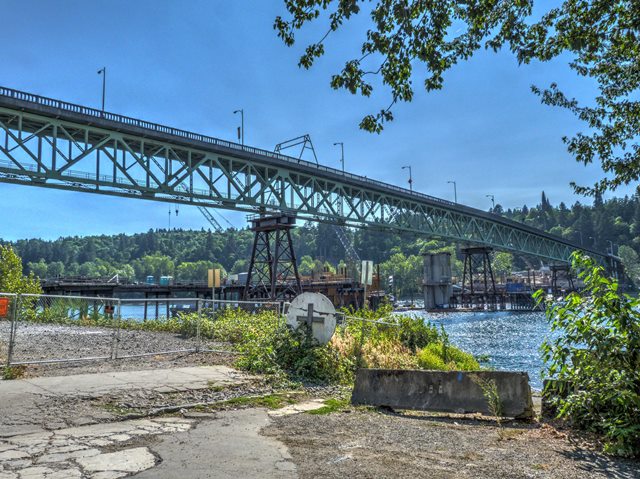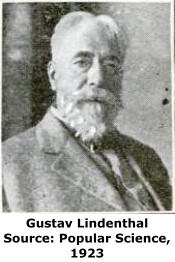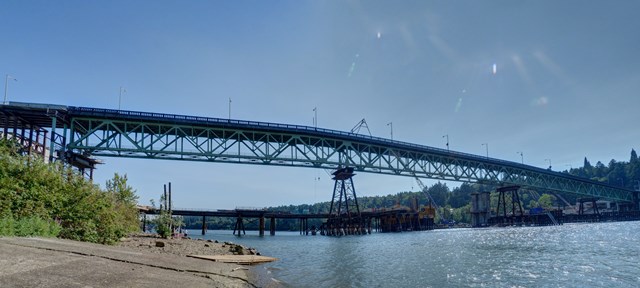We Recommend:
Bach Steel - Experts at historic truss bridge restoration.
Sellwood Bridge

Primary Photographer(s): Nathan Holth
Bridge Documented: August 23, 2014
Portland: Multnomah County, Oregon: United States
Metal Continuous (Straight Chords) 22 Panel Rivet-Connected Modified Warren (Subdivided) Deck Truss, Fixed and Approach Spans: Concrete Deck Girder, Fixed
1925 By Builder/Contractor: Gilpin Construction Company of Portland, Oregon and Engineer/Design: Gustav Lindenthal and Ira G. Hedrick
1960
300.0 Feet (91.4 Meters)
1,972.0 Feet (601.1 Meters)
30.8 Feet (9.39 Meters)
4 Main Span(s) and 24 Approach Span(s)
687900000000

View Information About HSR Ratings
Bridge Documentation
This bridge no longer exists!
View Archived National Bridge Inventory Report - Has Additional Details and Evaluation
View Historic American Engineering Record (HAER) Documentation For This Bridge
HAER Data Pages, PDF - HAER Data Pages, Alternate Version With Extra Images, PDF - HAER Data Pages Addendum, PDF
View Historic Resource Inventory Sheet For This Bridge
HAER Documentation, Willamette River Bridges - Data Pages - Drawings -Timeline
View A Historical Article About Gustav Lindenthal
Download A ZIP Archive of Various Materials From The Replacement Project
As of 2014, this historic bridge is being replaced, and the trusses have been moved aside to serve as a temporary bridge. They will be demolished after the new bridge is built!
About This Bridge
This bridge is an impressive high level continuous deck truss bridge that also includes a series of concrete approach spans. Its continuous trusses have a distinctive appearance due to the unusual subdivided Warren truss configuration and the fact that unlike many continuous or cantilevered deck truss bridges, the Sellwood Bridge trusses do not have a variable depth, and maintain the same shape and size throughout.
The bridge was designed jointly by Ira G. Hedrick (who for a short time in the early 20th Century worked with famous engineer J.A.L. Waddell) and famous engineer Gustav Lindenthal. Hedrick had completed a proposed design of the bridge and Lindenthal essentially took his design and made some modifications. These included a change to eliminate a plan to reuse two 1894 through trusses from the old Burnside Bridge, and to eliminate the use of double-intersection deck truss spans similar to those that Hedrick had designed for the new Burnside Bridge (another bridge whose design was started by Hedrick and completed by Lindenthal). Instead, Lindenthal designated a continuous subdivided Warren deck truss. Lindenthal was a pioneer in the design of continuous truss bridges, and although this bridge was one of the last bridges that Lindenthal designed during his career, it is significant as a very early surviving example of a large-scale continuous truss bridge. Continuous truss bridges are significant in the history of bridges because although trusses have largely fallen from favor in modern construction, continuous bridges are strongly preferred in modern construction, partly because the elimination of expansion joints reduces maintenance costs.
Replacement and Demolition of this Bridge

By 2014, this bridge was being replaced. The truss spans were moved over onto temporary piers to serve as a temporary bridge and when the new bridge is completed the entire historic bridge will be completely demolished. In general, both Oregon as a state and Portland as a city have an excellent historic bridge preservation track record. However the demolition of this highly significant bridge will be a devastating loss and a scar on Oregon and Portland's historic bridge preservation record. The loss of this bridge will represent the only demolition of a historic Willamette River Bridge in Portland in recent memory. Its also worth noting that nearly all of the Willamette River Bridges in Portland are historic, and so the loss of this bridge will interrupt a unique continuity of historic bridges in Portland. This could be compared to the Veterans Bridge in Pittsburgh, which is the only modern large river bridge in downtown Pittsburgh that is not historic, and this bridge looks severely out of place as a result. The loss of this bridge means the demolition of a bridge that was designed by two noteworthy engineers, with the continuous truss spans designed by one of the most important bridge engineers in American history. The demolition of this bridge means the loss of one of the earliest surviving large-scale continuous truss bridges in the country, and one designed by a famous engineer who pioneered and helped popularized the use of the continuous truss bridge.
This bridge could have been preserved. At the very least, the continuous trusses, which are the most significant component of the bridge, should have been preserved in some manner. Firstly, it is not clear what a wider replacement bridge will offer in terms of increased function. The historic bridge is the busiest two lane bridge in Oregon, and it was noted that there were few bridges over the river in this area. However, a wider replacement bridge will still feed into Tacoma Street, which only has two lanes, a left turn lane, and only one side of the street for parking. Houses on this stretch of road are very close to the road. Unless the city plans to demolish half the homes on Tacoma Street, even a 16 lane bridge will still be forced into a two lane road. Therefore, a wider bridge will change little. Moreover, replacing an existing bridge does not add much capacity. It was noted that there are few bridges in this area. Building a bridge in a completely different location in this region might have been a way to increase regional capacity, reduce traffic (and reduce wear and tear on the historic bridge) and add redundancy... if one bridge had to be closed, the second bridge would still be available.
The trusses were observed to have little evidence of widespread deterioration and section loss. Any deterioration would have been easy to repair. Even if officials were convinced that a new bridge was needed, the historic truss spans could have been preserved next to the replacement bridge for non-motorized traffic. The fact that the trusses were moved during construction demonstrates that this was possible! After the new bridge was built, new pedestrian ramps could be built up to the trusses, and the bridge could be used as a pedestrian bridge and linear park. It is unfortunate that creative preservation solutions that would have retained a historic bridge and improved the quality of life and tourism potential of the area were rejected. Creativity is the key to preservation, and in this case it shouldn't have been a very far fetched thought to see a win-win scenario of preserving the truss bridge for pedestrians next to its replacement.
Notes On Bridge Photos
By the time HistoricBridges.org photographed the bridge, construction of the replacement bridge was well underway. As part of the construction, the truss spans had been moved onto temporary piers next to the construction site where the trusses were serving as a temporary construction crossing. Most of the original eastern approach spans remained in place in their original location, and were connected by an all-new curved section of bridge that connected the eastern approach spans to the temporary location of the truss spans. Also, at the time HistoricBridges.org visited the bridge, the original truss piers had not yet been demolished, and remained standing. That being the case, the photo collection of overview and detail photos is comprehensive in that it offers coverage of all the significant parts of the bridge, just with the truss bridges in the temporary location.
![]()
Photo Galleries and Videos: Sellwood Bridge
Bridge Photo-Documentation
Original / Full Size PhotosA collection of overview and detail photos. This gallery offers photos in the highest available resolution and file size in a touch-friendly popup viewer.
Alternatively, Browse Without Using Viewer
![]()
Bridge Photo-Documentation
Mobile Optimized PhotosA collection of overview and detail photos. This gallery features data-friendly, fast-loading photos in a touch-friendly popup viewer.
Alternatively, Browse Without Using Viewer
![]()
Maps and Links: Sellwood Bridge
This historic bridge has been demolished. This map is shown for reference purposes only.
Coordinates (Latitude, Longitude):
Search For Additional Bridge Listings:
Bridgehunter.com: View listed bridges within 0.5 miles (0.8 kilometers) of this bridge.
Bridgehunter.com: View listed bridges within 10 miles (16 kilometers) of this bridge.
Additional Maps:
Google Streetview (If Available)
GeoHack (Additional Links and Coordinates)
Apple Maps (Via DuckDuckGo Search)
Apple Maps (Apple devices only)
Android: Open Location In Your Map or GPS App
Flickr Gallery (Find Nearby Photos)
Wikimedia Commons (Find Nearby Photos)
Directions Via Sygic For Android
Directions Via Sygic For iOS and Android Dolphin Browser
USGS National Map (United States Only)
Historical USGS Topo Maps (United States Only)
Historic Aerials (United States Only)
CalTopo Maps (United States Only)





